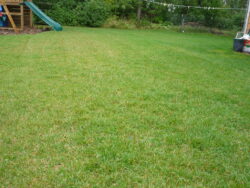Kentucky Bluegrass, with its lush texture and vibrant color, is a popular choice for lawns across many parts of the United States.
However, its adaptability to the warm, often arid climate of South Texas is a subject of considerable interest for homeowners and landscapers alike.
Kentucky Bluegrass in South Texas: A Detailed Look
Kentucky Bluegrass thrives in cool, humid regions and is native to Europe and northern Asia.
It has been successfully grown in the transition zones of the U.S., including parts of Texas, but South Texas presents unique challenges due to its warmer climate.
- Climate Challenges: Kentucky Bluegrass prefers soil temperatures around 60°F, with root growth declining sharply as temperatures rise above 70°F. The typical soil temperatures in South Texas, especially during summer, often exceed this range, limiting the grass’s ability to establish and maintain a healthy root system.
- Water Requirements: This grass type requires up to 2 inches of water weekly during the summer months to stay green and active. Given South Texas’s propensity for drought conditions, consistently meeting these water demands can be difficult.
- Varietal Selection: Although over 100 cultivars of Kentucky Bluegrass have been developed, with some showing better tolerance for southern climates, the extreme conditions of South Texas can still pose a significant challenge to their survival and flourish.
Geographical and Climatic Suitability
The geographical location and climatic conditions of South Texas place it outside the ideal growth zones for Kentucky Bluegrass.
The region’s extended warm seasons surpass the grass’s cool-season growth preferences, making it challenging for Kentucky Bluegrass to thrive.
In Summary: Kentucky Bluegrass in South Texas
- The warm climate and soil conditions of South Texas limit the growth of Kentucky Bluegrass.
- High temperatures and potential drought conditions challenge the grass’s survival.
- While some cultivars may offer resilience, the suitability of Kentucky Bluegrass for South Texas lawns remains limited.
Descriptive Sources Section
- Texas A&M AgriLife Extension: Offers an in-depth look at Kentucky Bluegrass and its adaptability to different climates, including the transition zones of Texas. Kentucky Bluegrass in Texas – Aggie Horticulture
- Nature’s Seed: Provides a comprehensive guide on the best grass seeds for various U.S. regions, touching on the challenges and recommendations for Texas. Best Grass Seed for Texas – Nature’s Seed
- Austin Texas Government: Shares insights into turfgrass selection for Texas, highlighting the environmental considerations and best practices for lawn care in the state. Turfgrass Selection for Texas – AustinTexas.gov




